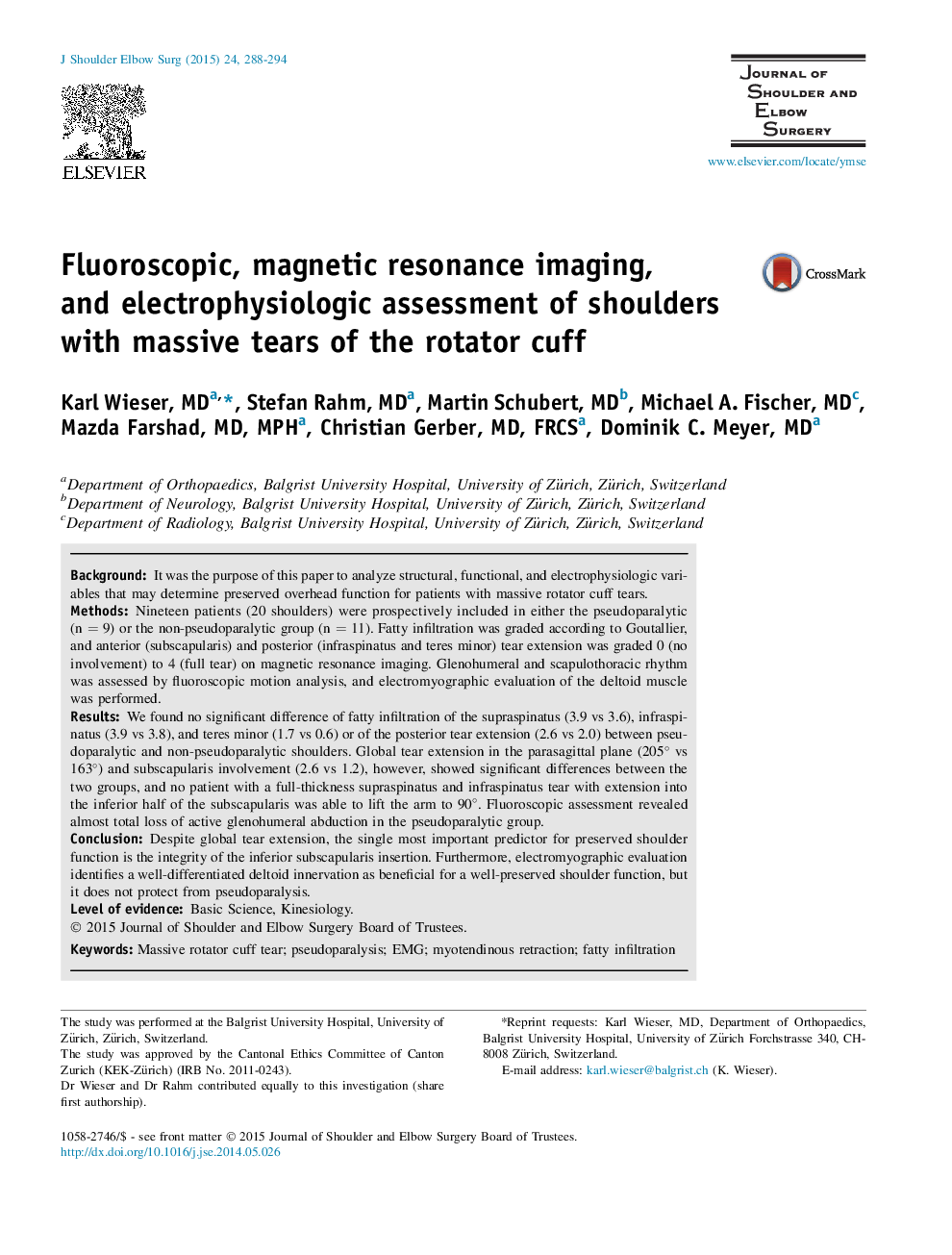| کد مقاله | کد نشریه | سال انتشار | مقاله انگلیسی | نسخه تمام متن |
|---|---|---|---|---|
| 4073678 | 1266987 | 2015 | 7 صفحه PDF | دانلود رایگان |
BackgroundIt was the purpose of this paper to analyze structural, functional, and electrophysiologic variables that may determine preserved overhead function for patients with massive rotator cuff tears.MethodsNineteen patients (20 shoulders) were prospectively included in either the pseudoparalytic (n = 9) or the non-pseudoparalytic group (n = 11). Fatty infiltration was graded according to Goutallier, and anterior (subscapularis) and posterior (infraspinatus and teres minor) tear extension was graded 0 (no involvement) to 4 (full tear) on magnetic resonance imaging. Glenohumeral and scapulothoracic rhythm was assessed by fluoroscopic motion analysis, and electromyographic evaluation of the deltoid muscle was performed.ResultsWe found no significant difference of fatty infiltration of the supraspinatus (3.9 vs 3.6), infraspinatus (3.9 vs 3.8), and teres minor (1.7 vs 0.6) or of the posterior tear extension (2.6 vs 2.0) between pseudoparalytic and non-pseudoparalytic shoulders. Global tear extension in the parasagittal plane (205° vs 163°) and subscapularis involvement (2.6 vs 1.2), however, showed significant differences between the two groups, and no patient with a full-thickness supraspinatus and infraspinatus tear with extension into the inferior half of the subscapularis was able to lift the arm to 90°. Fluoroscopic assessment revealed almost total loss of active glenohumeral abduction in the pseudoparalytic group.ConclusionDespite global tear extension, the single most important predictor for preserved shoulder function is the integrity of the inferior subscapularis insertion. Furthermore, electromyographic evaluation identifies a well-differentiated deltoid innervation as beneficial for a well-preserved shoulder function, but it does not protect from pseudoparalysis.
Journal: Journal of Shoulder and Elbow Surgery - Volume 24, Issue 2, February 2015, Pages 288–294
